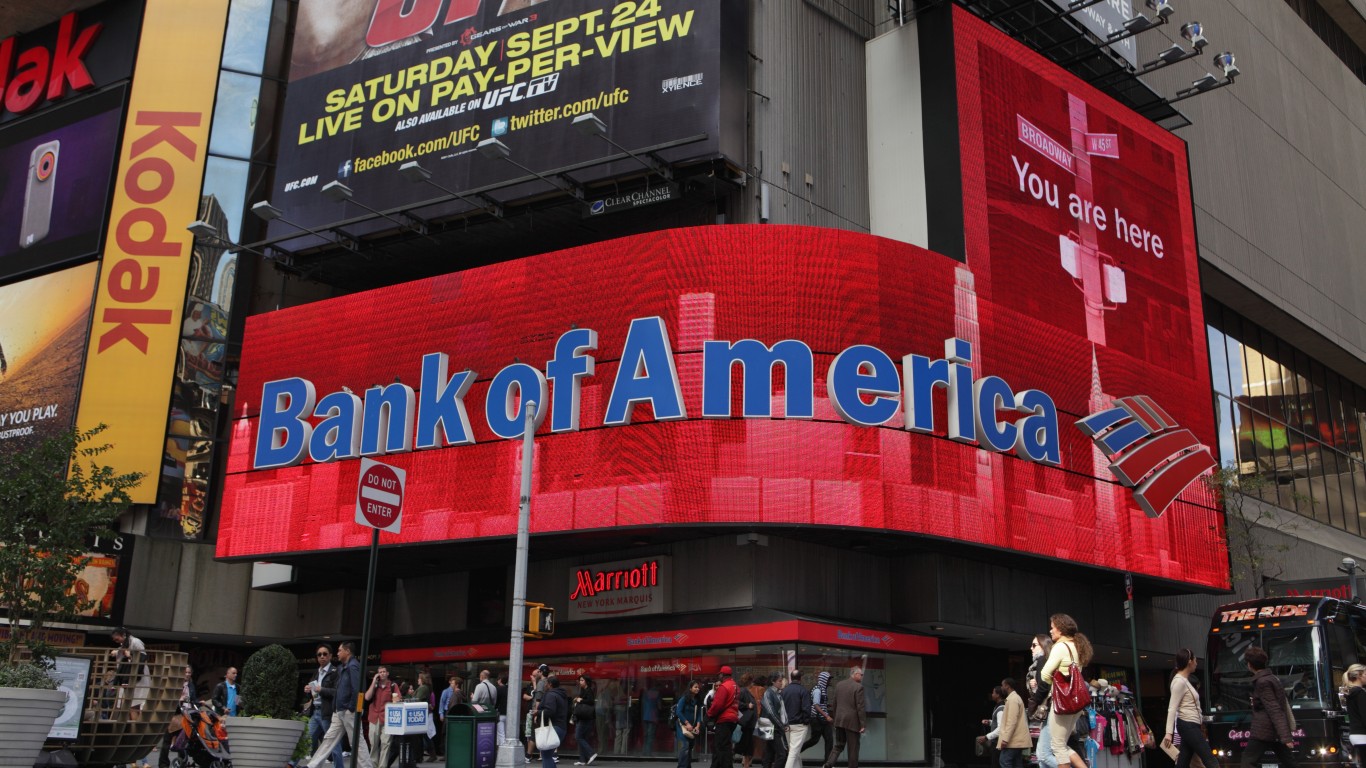Banking, finance, and taxes
Where Bank of America's Record Income Was Derailed

Published:
Last Updated:

Bank of America Corp. (NYSE: BAC) posted fiscal first-quarter 2019 results before markets opened Tuesday morning. The big bank reported diluted earnings per share (EPS) of $0.70 on revenue of $23 billion. In the same period a year ago, it reported EPS of $0.62 and $23.1 billion in revenue. First-quarter results also compare to the consensus estimates for EPS of $0.65 on revenue of $23.3 billion.
Net income rose 6% year over year to a record $7.3 billion. Net interest income rose by $606 million year over year and non-interest income fell by $672 million. Income tax expense was essentially flat at $1.46 billion. Non-interest expense fell by $618 million.
Credit loss provision totaled $1.01 billion in the quarter, up by $179 million compared with the same period in 2018. In the consumer banking division alone, credit loss provision rose by $39 million year over year to $974 million.
Net charge-offs increased by $80 million to $991 million and the net charge-off ratio rose from 0.40% to 0.43% year over year. The bank did not report any release from reserves in the first quarter.
CEO Brian Moynihan said:
Economic growth and consumer activity in the U.S. continue to be solid, businesses of every size are borrowing and driving the economy, and asset quality is strong. It was a challenging capital markets environment but our team and platform are optimized to serve clients and generate stable revenues across a range of market conditions over time.
The bank did not provide guidance in its earnings release. The consensus estimate for second-quarter EPS is $0.74 on revenues of $23.62 billion. For the full 2019 fiscal year, the Wall Street forecast calls for $2.87 in EPS on revenues of $93.69 billion.
Bank of America’s strong showing in interest income was offset by a dip in total revenues. That drop was entirely the result of a $600 million decline in sales and trading revenue in the bank’s global markets division.
Shares traded about 1.6% lower shortly after Tuesday’s opening bell, at $29.37. The 52-week trading range is $22.66 to $31.91. Analysts had a 12-month consensus price target of $33.17 before results were announced.
Retirement can be daunting, but it doesn’t need to be.
Imagine having an expert in your corner to help you with your financial goals. Someone to help you determine if you’re ahead, behind, or right on track. With SmartAsset, that’s not just a dream—it’s reality. This free tool connects you with pre-screened financial advisors who work in your best interests. It’s quick, it’s easy, so take the leap today and start planning smarter!
Don’t waste another minute; get started right here and help your retirement dreams become a retirement reality.
Thank you for reading! Have some feedback for us?
Contact the 24/7 Wall St. editorial team.